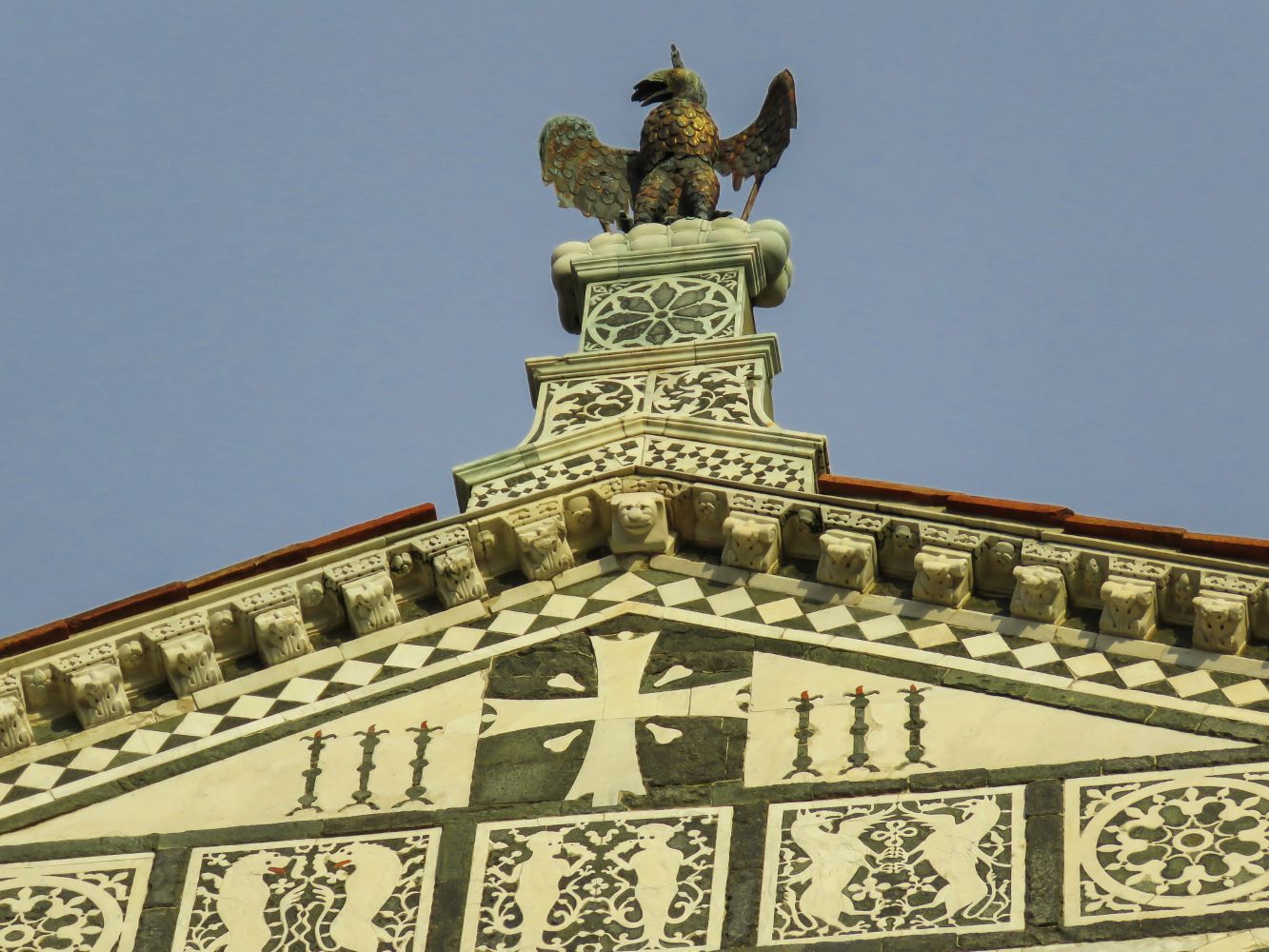

Why is Florence this splendidly ornate..? Where the wealth that only could allow the city to be so richly covered in marble came from..?
This is all about the Guilds. They where in charge in Florence before the Medici family rose to power, and they were extremely highly-esteemed since they increased the wealth and the power of the city.
The Arte di Calimala (Guild of Calimala) was one of the most widely-known guild amongst the guilds of Florence, mainly thanks to the international fabric trade. Its niche, on the exterior of Orsanmichele church, took up an honourable position in Via Calzaiuoli (on the corner of Via de’ Lamberti):
This space was glorified by the stunning Orcagna tabernacle housed within the church..!
This tabernacle was usually filled with light, before the arches of the church were filled in towards the end of the 14th century. At the beginning of the 1400s, this guild was so wealthy and powerful that it was possible to commission Ghiberti to sculpt a huge bronze statue of their patron saint, San Giovanni Battista. From 1412 to 1416, Ghiberti thus created the first great bronze-after the ones of classical antiquity, adorning it also with silver-plated corneas. The original of this magnificent statue can be admired – along with all the other original statues from the church,
in the Orsanmichele Museum, which is open and free of charge on Mondays and Saturdays..!
The crest that represents this Guild was made up of an eagle clawing a “balla ammagliata” (“bale”), which has been separated into twelve/thirteen parts and wrapped in felt, so that they were bagged up ready for sale.
This crest is still visible inside at least thirteen buildings in the city centre, all in the form of a “pietrino”: a stone with the emblem of the institution that owned that particular building engraved onto it..! These can be found, for instance, at Piazza del Duomo 4, Piazza San Giovanni 6 and 8, Piazza della Signoria 1, Via Vacchereccia 3.
We can easily look for them together while on tour..!
All of these buildings once belonged to the Guild, some of which were identified by their number on the “register of possessions”, similar to a street address.
The official headquarter of the Guild from 1359 onwards was found in the buildings in Via dei Calzaiuoli 1r-5r, Via Calimaruzza 2, Piazza della Signoria 4a, and Via Porta Rossa 1r, including the old premises for the Molteni pharmacy, which once housed the guild’s courtroom..! At Via Calimaruzza (also known as “Calimala Vecchia” or “Calimala Francesca” 2a, there is an archway bearing the crest of a field blanketed in French lilies: this shows that the arch was once the entrance to a Guild building, where bales of French wool cloth was imported from markets in the Champagne region. The cloth would arrive in Florence untreated, where it was then refined until it was of the highest quality: the Arte della Lana (Guild of woolmakers) would take care of the wool bale productions at a strictly local level.
Another two eagles with bales can be found upon two of the most important religious buildings in Florence: one on the North Door of the Baptistery, and the other high up on the façade of the San Miniato al Monte church. The Arte di Calimala actually “sponsored” both of these buildings, from 1150 and 1180 respectively.
It is thanks to this Guild that the three doors of the Baptistery were commissioned..!
Inside these two buildings, you can see incredible traces of the materials that the Guild used to trade in during the oldest and lesser-known eras before 1220. Before this time, the Guild had to import their goods via different locations: wool came across the Arno and into what was at then the extremely powerful Pisa, while precious silks came from Egypt, Syria, Maghreb and the “Garbo” (what is now thought to be the Iberian Peninsula, from the “Algarve”). It is likely to be these materials – often conserved in tattered shreds in museums around the world – that inspired the marble sculptors to create the stunning “tarsìe” (marble mosaic patterns) that were typical of Romanesque Florence, which can be found particularly on the floor of the Baptistery and the San Miniato church.
From 1220, the beginning of the war between Florence and Pisa, trading between the two cities was interrupted. It was from this point that the Calimala Guild began to trade with French bales, from England and the Flemish region.
